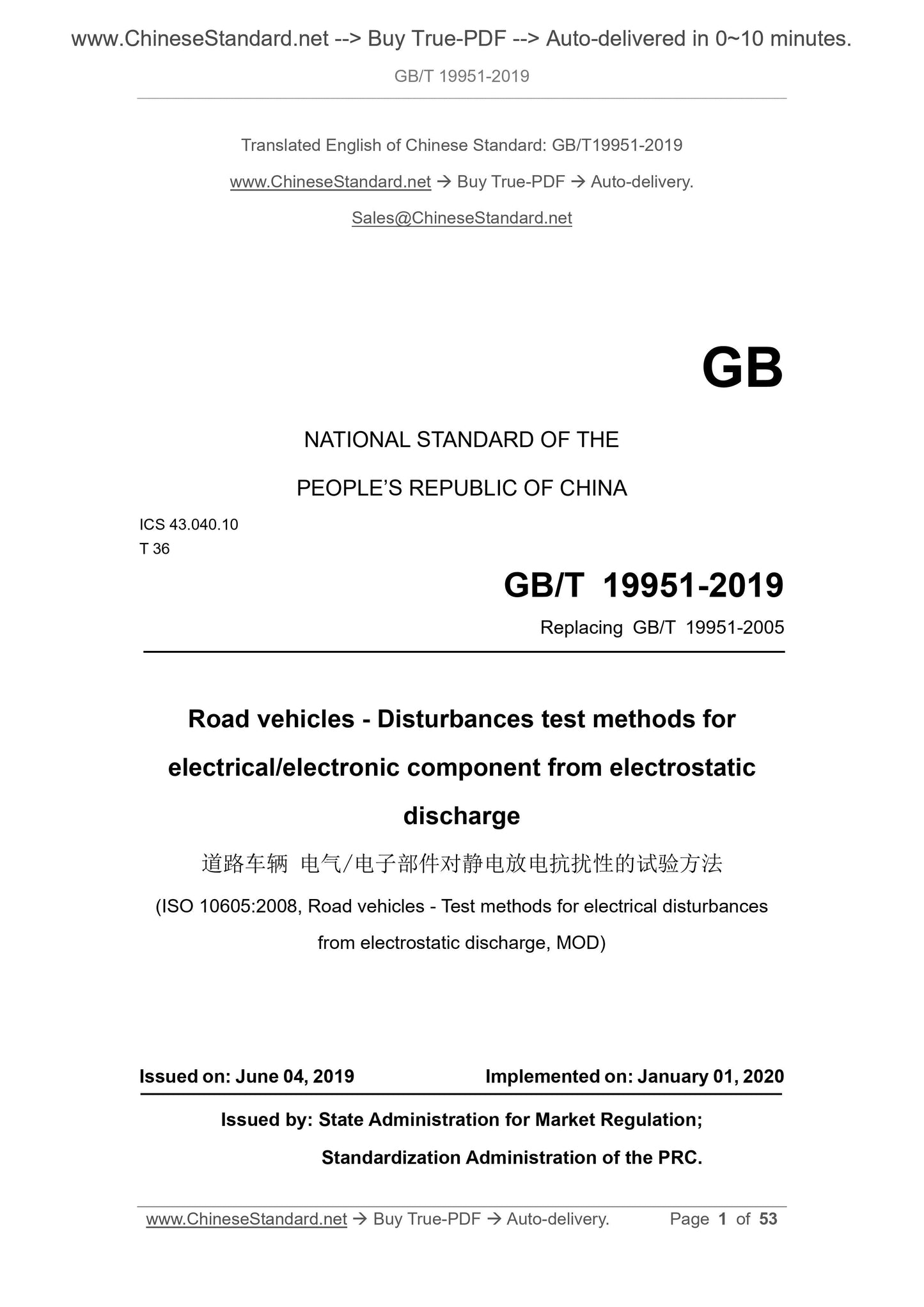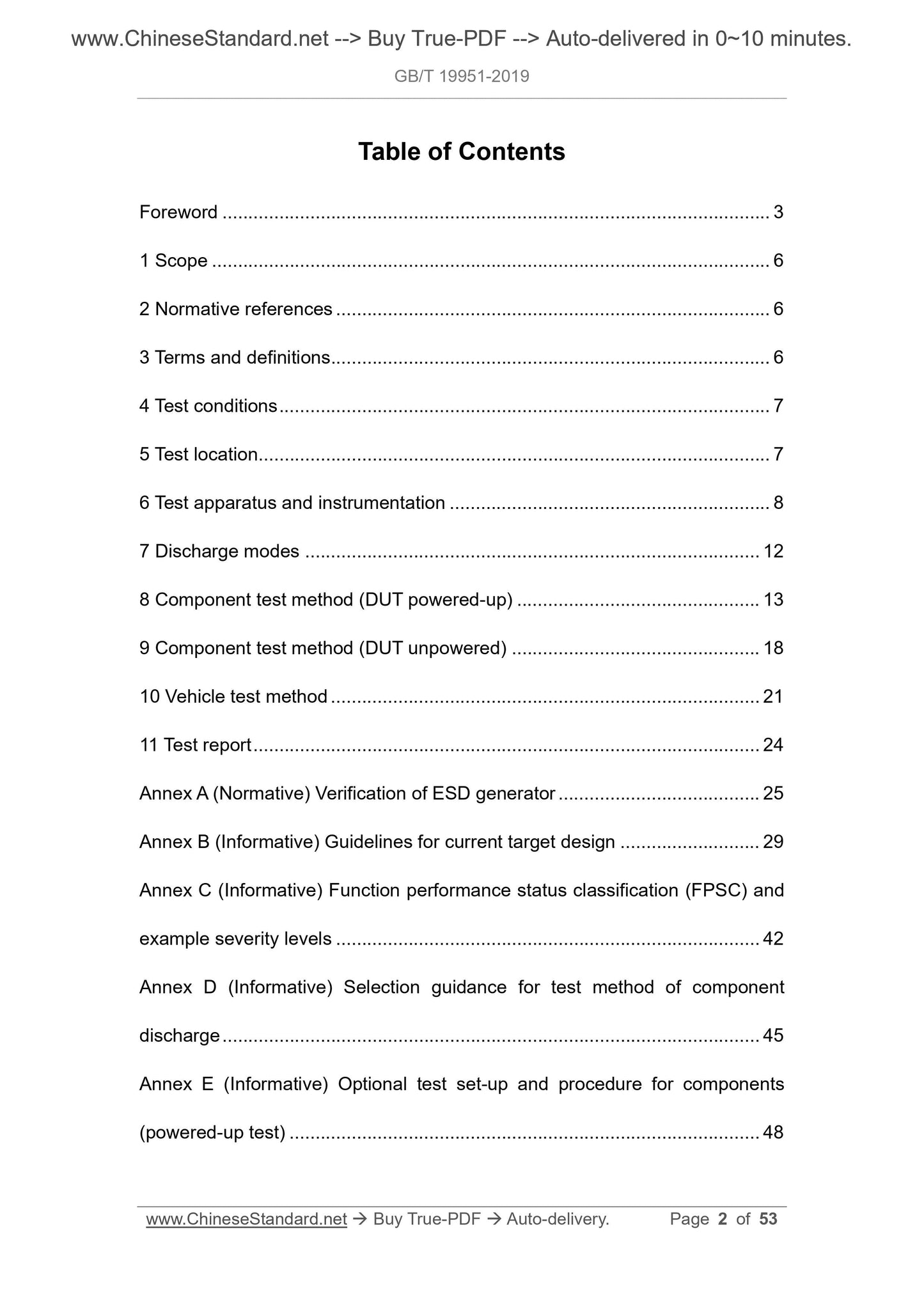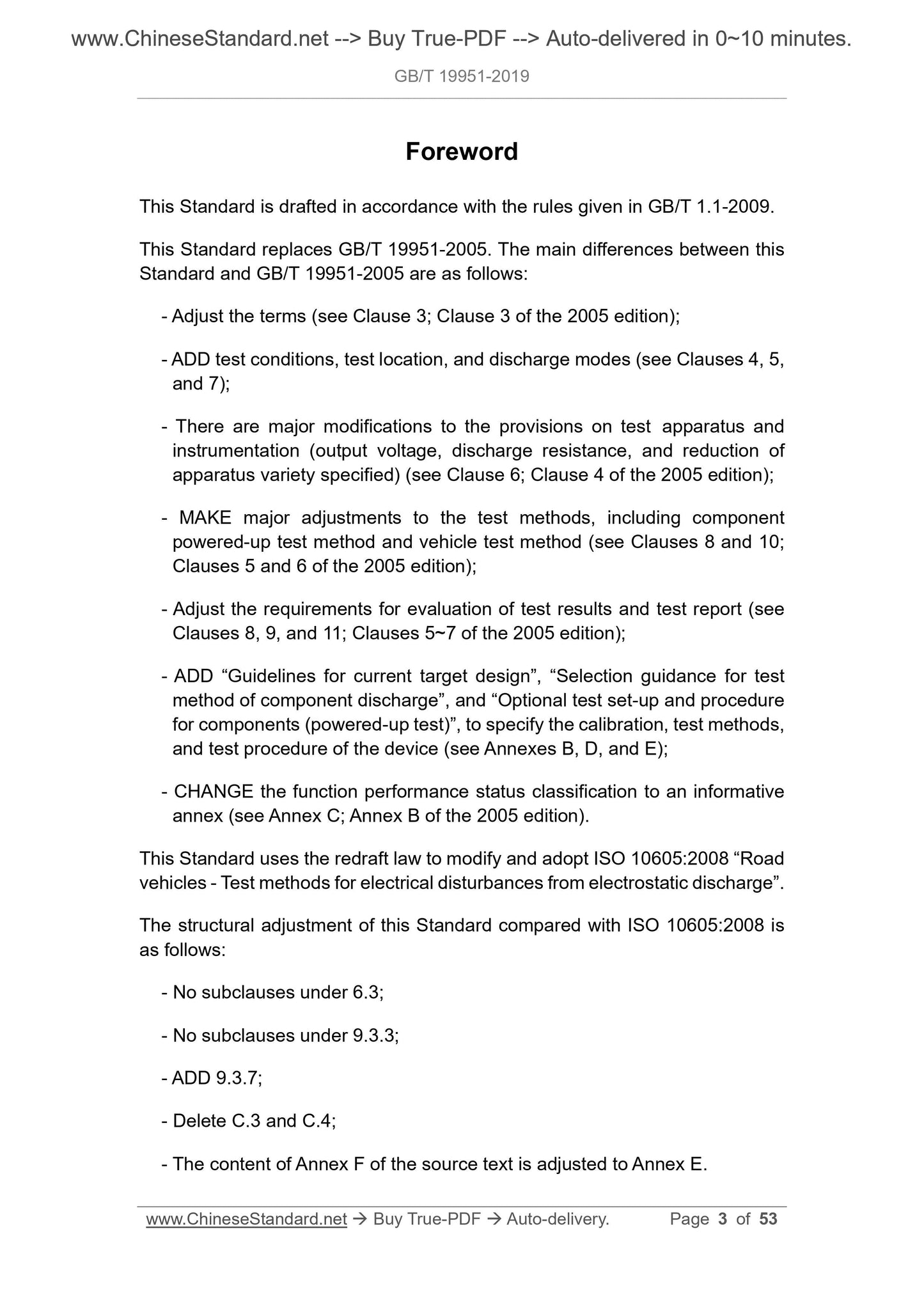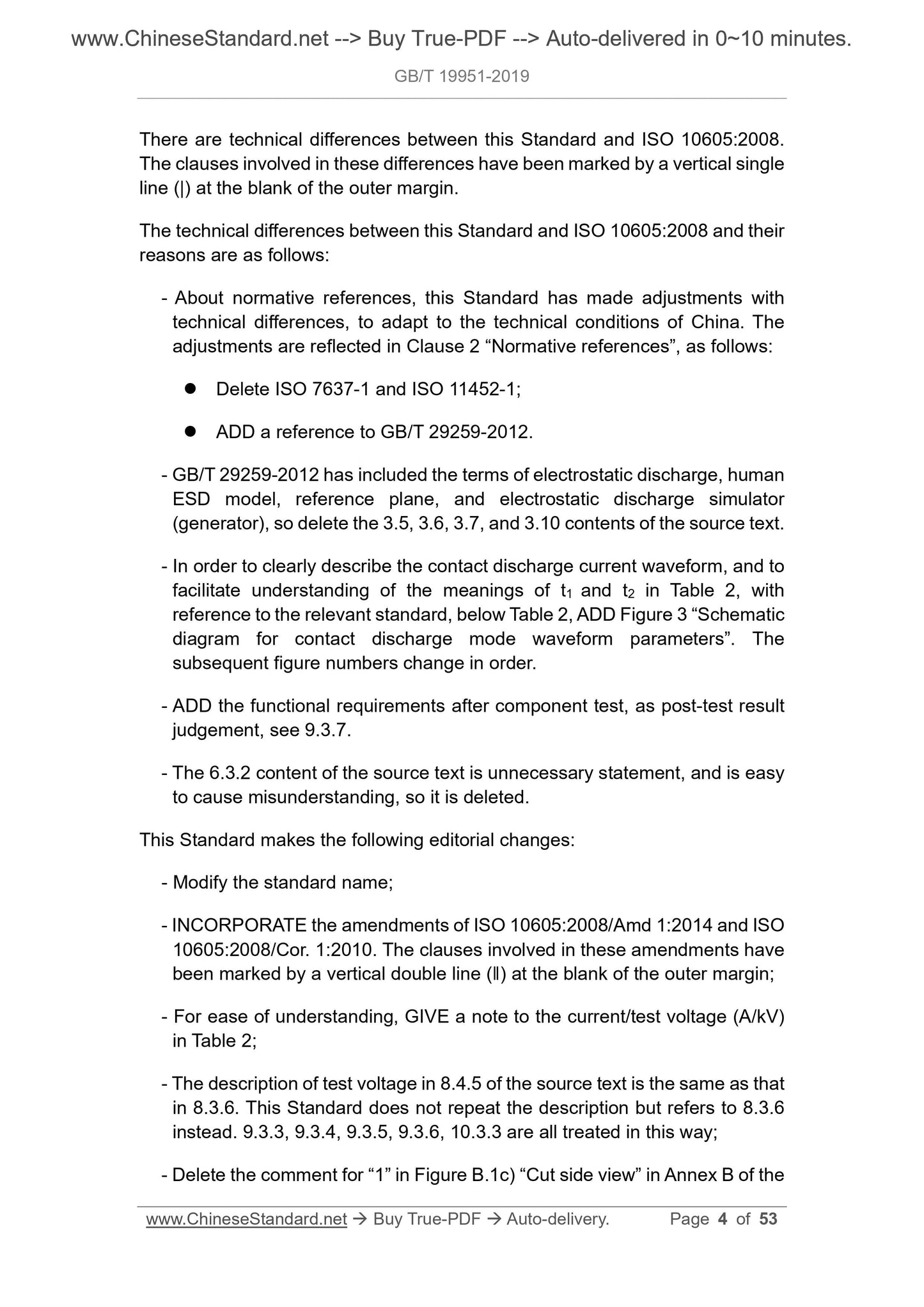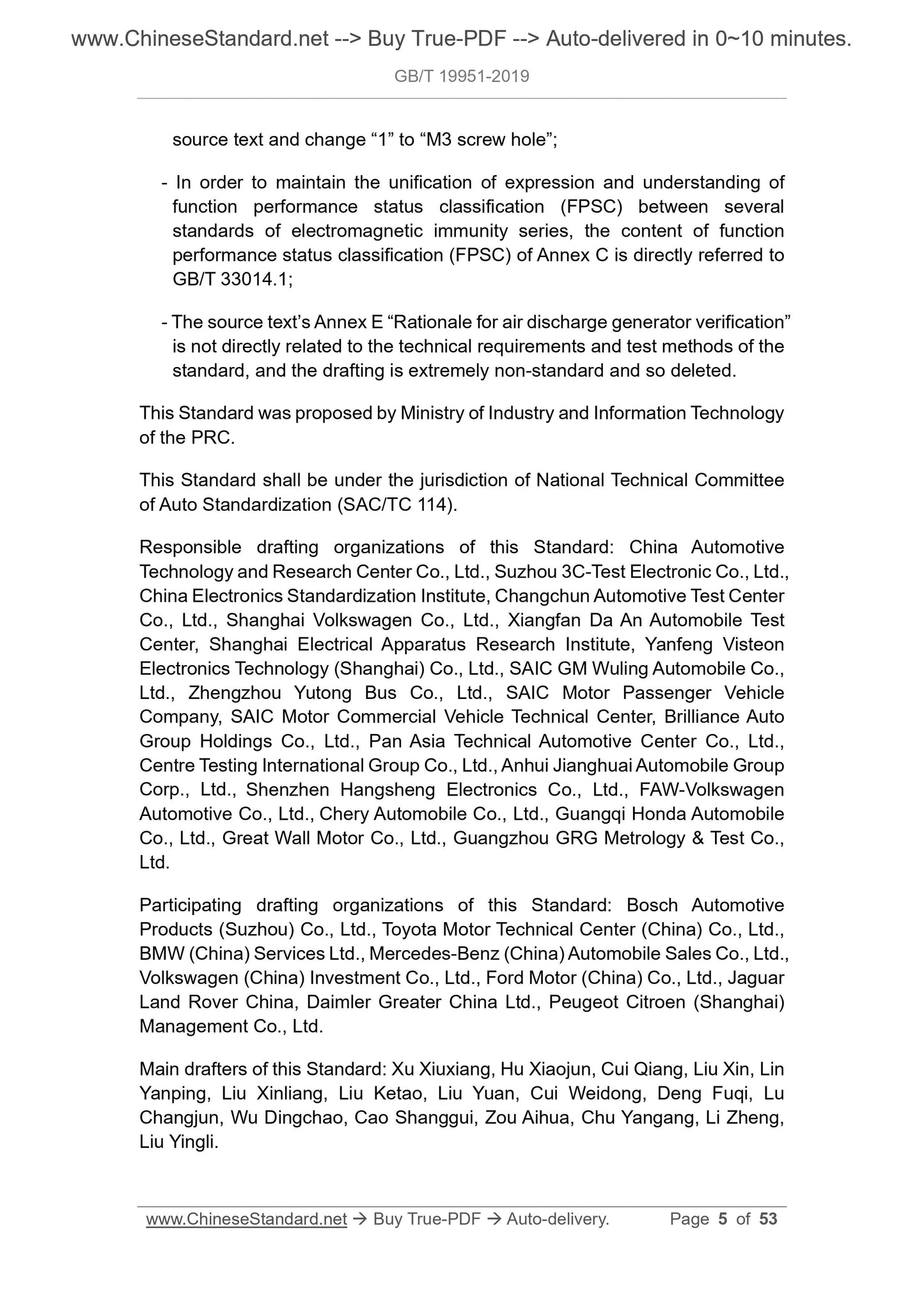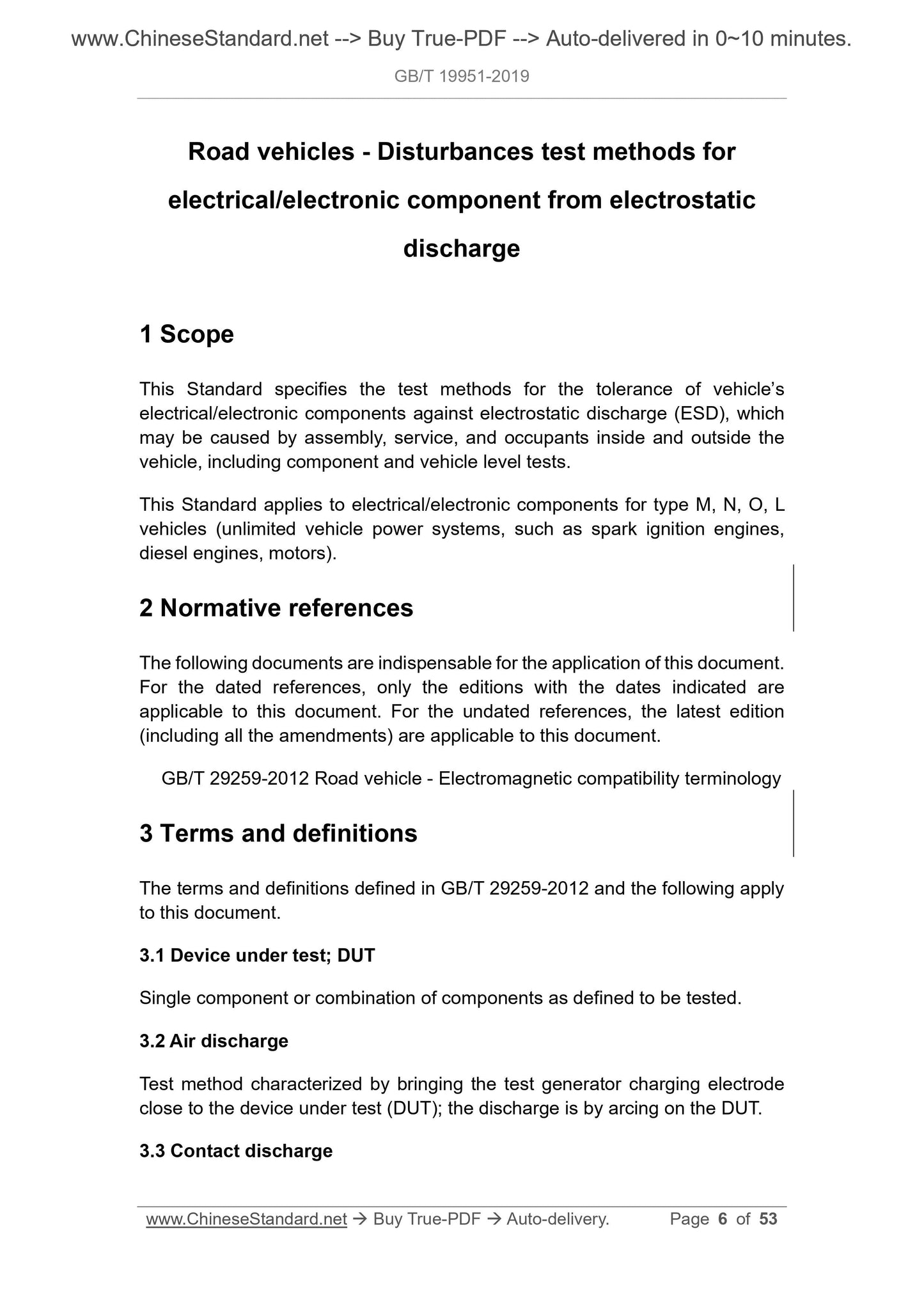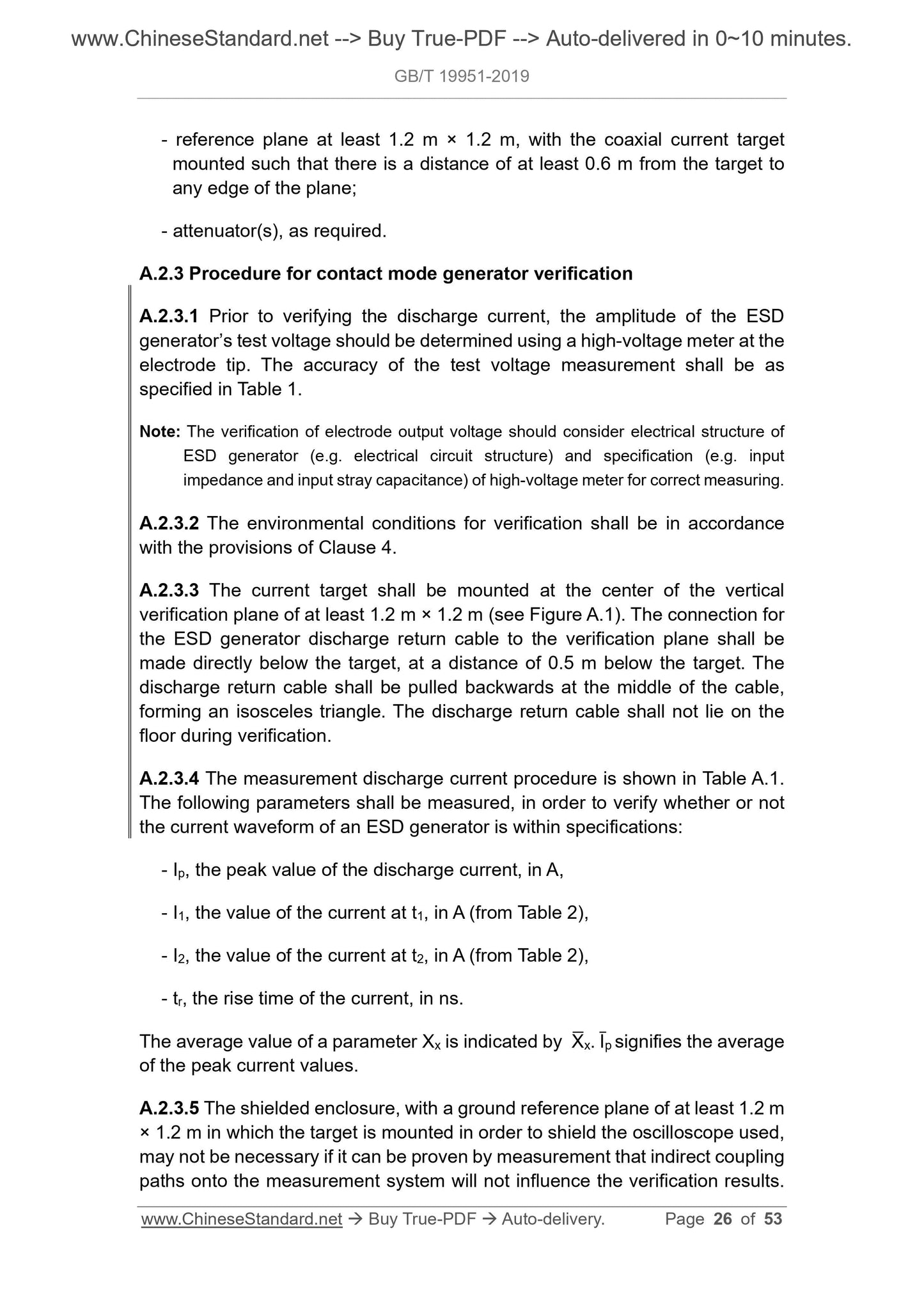1
/
of
7
www.ChineseStandard.us -- Field Test Asia Pte. Ltd.
GB/T 19951-2019 English PDF (GB/T19951-2019)
GB/T 19951-2019 English PDF (GB/T19951-2019)
Regular price
$345.00
Regular price
Sale price
$345.00
Unit price
/
per
Shipping calculated at checkout.
Couldn't load pickup availability
GB/T 19951-2019: Road vehicles - Disturbances test methods for electrical/electronic component from electrostatic discharge
Delivery: 9 seconds. Download (and Email) true-PDF + Invoice.Get Quotation: Click GB/T 19951-2019 (Self-service in 1-minute)
Newer / historical versions: GB/T 19951-2019
Preview True-PDF
Scope
This Standard specifies the test methods for the tolerance of vehicle’selectrical/electronic components against electrostatic discharge (ESD), which
may be caused by assembly, service, and occupants inside and outside the
vehicle, including component and vehicle level tests.
Basic Data
| Standard ID | GB/T 19951-2019 (GB/T19951-2019) |
| Description (Translated English) | Road vehicles - Disturbances test methods for electrical/electronic component from electrostatic discharge |
| Sector / Industry | National Standard (Recommended) |
| Classification of Chinese Standard | T36 |
| Classification of International Standard | 43.040.10 |
| Word Count Estimation | 38,379 |
| Date of Issue | 2019-06-04 |
| Date of Implementation | 2020-01-01 |
| Older Standard (superseded by this standard) | GB/T 19951-2005 |
| Quoted Standard | GB/T 29259-2012 |
| Adopted Standard | ISO 10605-2008, MOD |
| Issuing agency(ies) | State Administration for Market Regulation, China National Standardization Administration |
| Summary | This standard specifies the test methods for the resistance of vehicle electrical/electronic components to electrostatic discharge (ESD) that may be generated during assembly, maintenance, and inside and outside the vehicle by drivers and passengers, including component and vehicle level tests. This standard applies to electrical and electronic components for M, N, O, L vehicles (not limited to vehicle power systems, such as spark ignition engines, diesel engines, electric motors). |
Share
